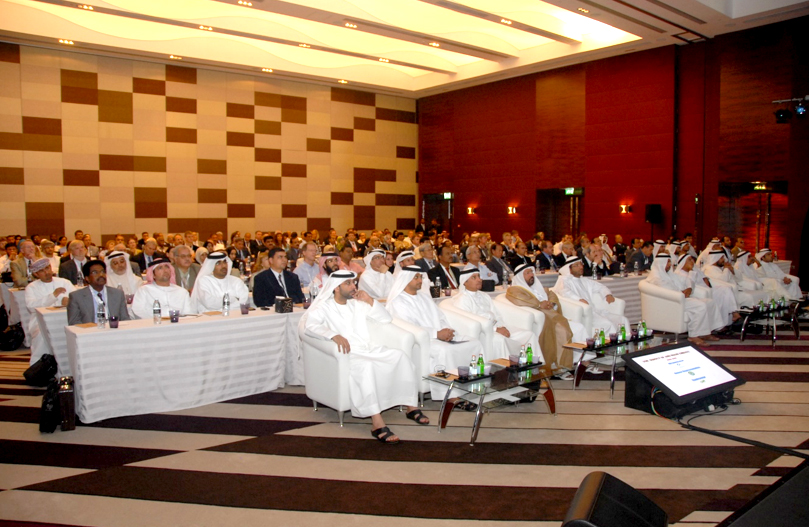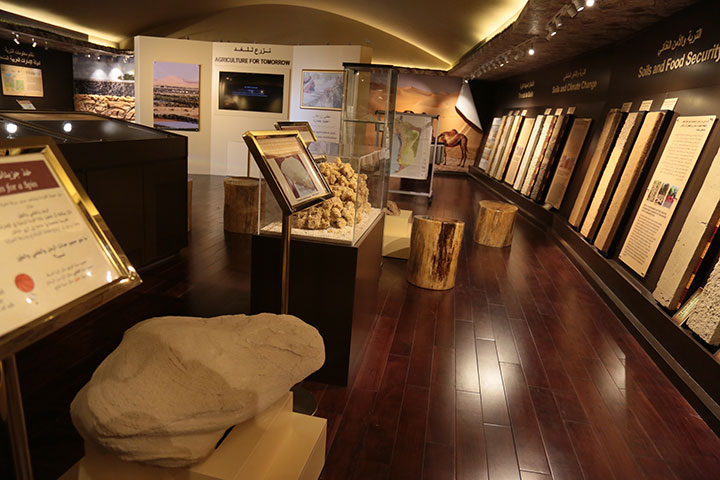About the Museum
Evolution of the Emirates Soil Museum

19 May 2010. International Conference on Soil Classification and Reclamation of Degraded Lands in Arid Environments.
The history of the museum goes back to 19 May 2010 when ICBA’s Senior Soil Scientist Dr. Shabbir Shahid as Chairman of the Recommendation Committee of the International Conference on Soil Classification and Reclamation of Degraded Lands in Arid Environments, held in Abu Dhabi, recommended the establishment of a soil museum, which was unanimously endorsed by the participants. The conference was jointly organized by the Environment Agency - Abu Dhabi and ICBA under the patronage of H.H. Sheikh Hamdan Bin Zayed Al Nahyan, the Ruler’s Representative in the Western Region Abu Dhabi, and Chairman of the Environment Agency – Abu Dhabi.
ICBA’s Board of Directors also approved, a site was chosen, and work began.
In 2016, the Abu Dhabi Fund for Development sponsored the museum by providing a grant for technology adoption and enhancement of the interior and exterior exhibits.
The Emirates Soil Museum was officially opened on 8 December 2016. Since its launch, the museum benefitted students, researchers, professionals, scientists, environmentalists, decision and policy makers, and land use planners in the common pursuit of sustainable national development.
Above and Underground

The Museum is a unique facility in the Gulf region offering an opportunity to visitors to learn about the soil story. What we see above the ground is only a fraction of that story: we see the buildings, but not the foundations, we see the beauty of the landscape with a diversity of plants, but not how the roots are distributed in the soil to support those plants by providing water and nutrients from the underground. The Museum has both external and internal exhibits that allow visitors to immerse themselves in the world of soil.
Outside the Museum, a custom-designed landscape includes a diversity of desert plants and rocks found in the United Arab Emirates. Visitors are exposed to the diversity of plants adapted to the UAE climate as well as their features and benefits. Museum goers could also enjoy a walk along the paths amongst the greenery or relax under the shade in majlis inspired seating areas with a view. Inside the Museum, exhibits are grouped in themes that incapsulate the soil information and present it in topics of relevance to the visitors such as Climate Change and Food Security. Monoliths of all soil types found in the UAE are displayed along with mock-ups of insects and beetles, tools commonly used to observe underground processes, and specialized modern equipment to assess soil and water quality. In addition to the displays, there are 2 interactive simulators of sand dunes formation and water infiltration in different soil types.
Visitors are provided with iPads enabled with an augmented reality feature that takes them on a historical and scientific tour, providing information about a wide range of museum exhibits. Visitors of all ages, especially children, love to learn about the amazing world of soils via this custom-made augmented reality app. The museum is also equipped with a library of soil information resources and computers with access to geospatial maps of the UAE environment providing additional visual data.
Useful Links
Soil museums and educational centres
- Bangalore, Indian Society of Soil Science
- The Dokuchaev Central Soil Museum, Saint Petersburg
- Smithsonian Soils Sxhibit, Washington DC, USA
- Soil Museum Bangkok
- Museo de Suelos, Bogotá, Colombia
- Museo de Suelos de la Facultad de Ciencias, Universidad de Granada
- Museo de Suelos, Iquitos, Peru
- ISRIC - World Soil Museum
